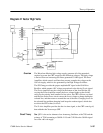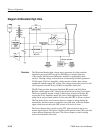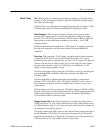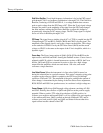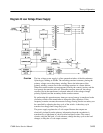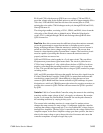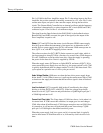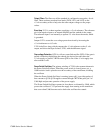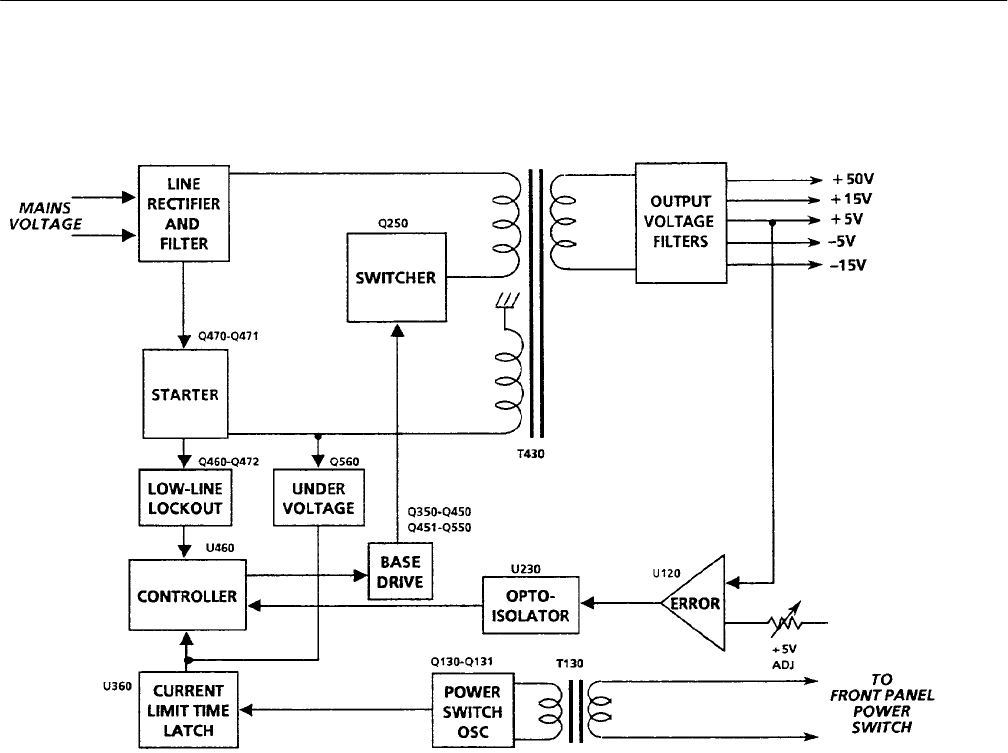
Theory of Operation
1780R-Series Service Manual
3–113
Diagram 43 Low Voltage Power Supply
The low voltage power supply is a line operated switcher, of the discontinuous
flyback type, running at 40 kHz. The switching transistor saturates, placing the
primary voltage across the primary winding. Due to the inductance of the
primary winding, current rises in the switching transistor in a linear fashion.
When this current reaches a preset amount (fixed by the control circuitry and the
load power) the transistor turns off. When the transistor turns off, the energy
stored as flux in the transformer is released when all of the voltages change
polarity (flyback) and the secondary diodes conduct current.
By performing this operation many times per second, energy is transferred to the
secondary circuits of the transformer to charge the filter capacitors. If the
frequency remains constant, the amount of energy flowing into the secondary can
be controlled by adjusting the duty cycle of the switch. A short duty cycle
transfers less energy than a long duty cycle.
The power supply regulates the +5 volt output. Because the outputs are
electrically isolated from the primary, information about the secondaries is
transferred by a light beam in a device called an Opto-Isolator. The control
circuits, using the fed back +5 volt reference, change the duty cycle as the load
changes, to keep the +5 volt output constant.
Overview





